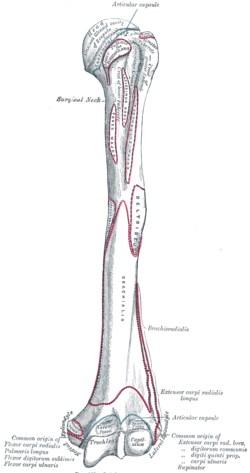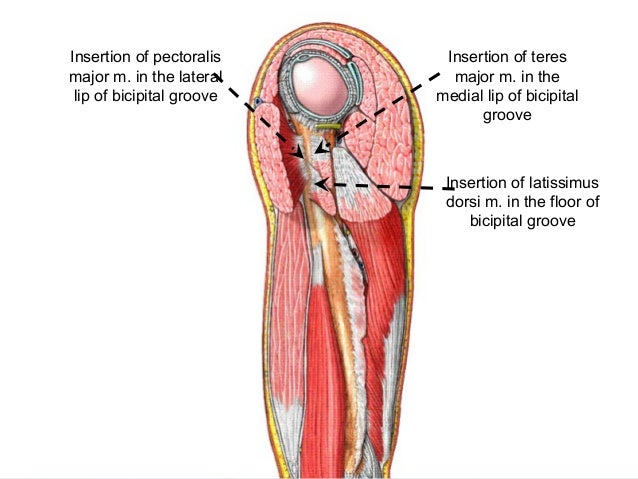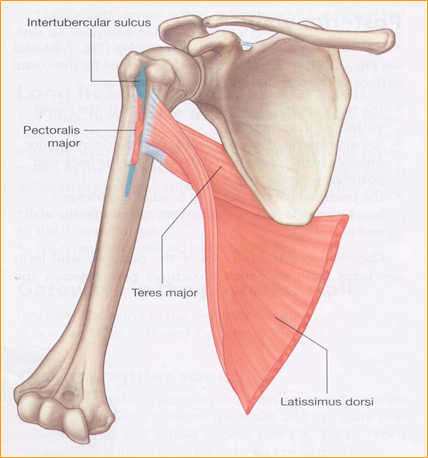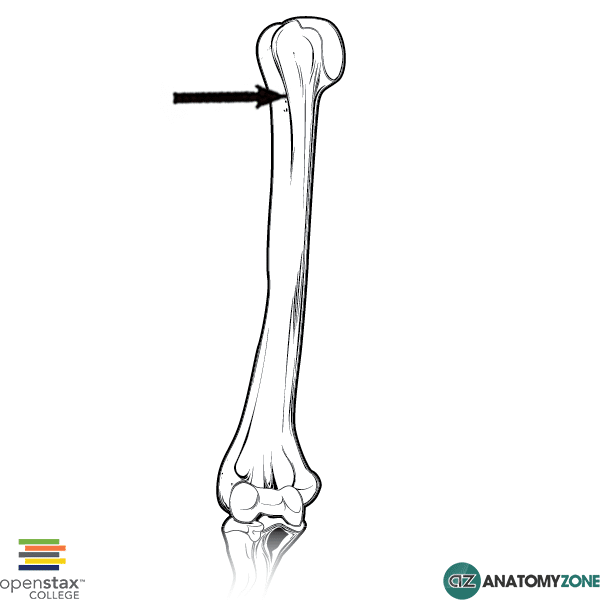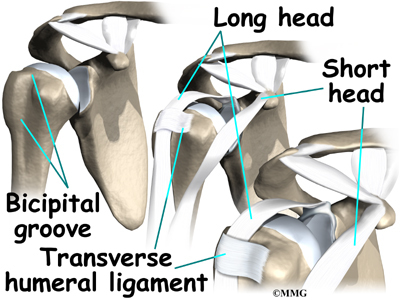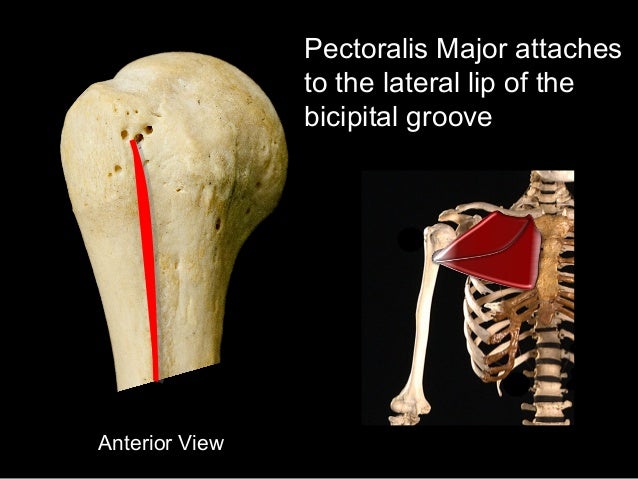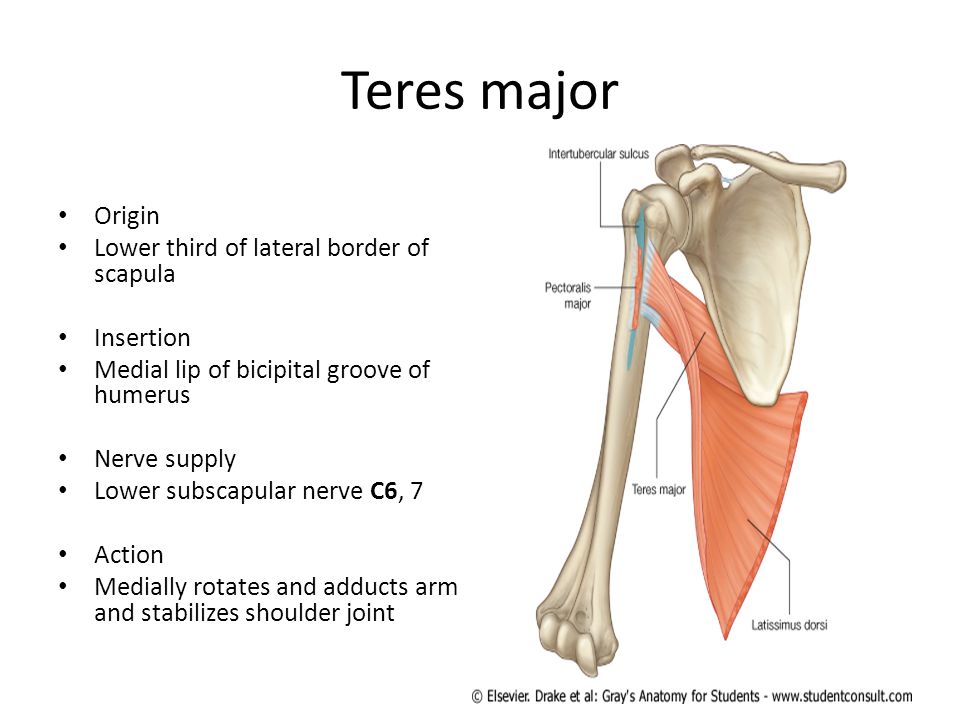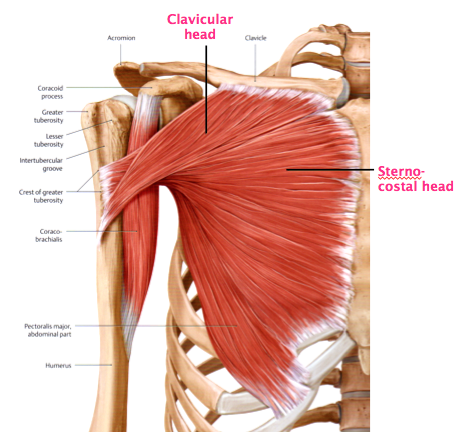Bicipital Groove Upper Arm
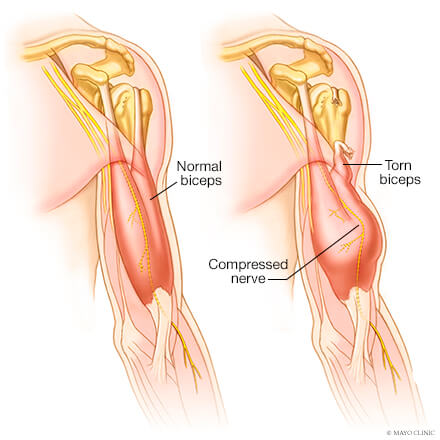
It also transmits a branch of the anterior humeral.
Bicipital groove upper arm. Tendons attach muscle to bone. The pulse of the brachial artery can be felt in the medial bicipital groove. It also transmits a branch of the anterior humeral. Bicipital tendinitis referred to also as biceps tendinitis and shoulder tendinitis is swelling of the long head of the biceps tendon.
The bicipital groove intertubercular groove sulcus intertubercularis is a deep groove on the humerus that separates the greater tubercle from the lesser tubercle the bicipital groove lodges the long tendon of the biceps brachii between the tendon of the pectoralis major on the lateral lip and the tendon of the teres major on the medial lip. This produces a characteristic sign on flexing the elbow a bulge where the muscle belly is called the popeye sign. The greater and lesser tubercles of humerus are separated from each other by a deep groove the intertubercular groove bicipital groove which lodges the long tendon of the biceps brachii and transmits a branch of the anterior humeral circumflex artery to the shoulder joint it runs obliquely downward and ends near the junction of the upper with the middle third of the bone. It helps you bend your elbow and twist your forearm.
The long head tendon attaches your bicep to. Your bicep is the muscle in the front of your upper arm. The medial bicipital groove is seen on the surface anatomy of the upper arm it is formed by the longitudinal hollow between the biceps and triceps muscles. The shoulder is a ball and socket joint.
A complete rupture of any tendon in the body is rare. It should be distinguished from the bicipital groove or intertubercular sulcus which is not a surface anatomy structure. As it exits the distal bicipital groove in the upper arm the lhbt joins the short head of the biceps tendon shbt as both transitions into their respective muscle bellies in the central third of the upper arm. Sometimes the long head of biceps tendon does not fully slip out of the groove but the weakness of the external rotators allows the humeral head to turn inward and the tendon pushes against an injured or ruptured transverse ligament which is painful.
After crossing the volar aspect of the elbow the biceps brachii inserts on the radial tuberosity and medial forearm fascia. However the long head of the biceps brachii is one of the more common tendons to rupture. Symptoms of a slipped biceps tendon a clunk when turning the arm inward or outward. The most common finding of biceps tendon injury is bicipital groove point tenderness 1 during physical examination the patient stands or sits with the arm at his or her side in 10 degrees of.
Three tendons attach your bicep to bone. Rupture of the biceps tendon.


